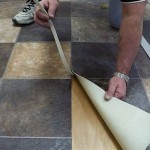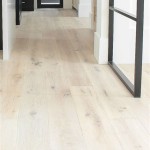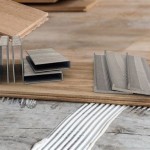How To Install Tongue and Groove Flooring On a Wall
Using tongue and groove flooring on a wall is an increasingly popular design choice, offering a visually appealing texture and a durable surface. This installation can transform a mundane wall into a statement piece, adding warmth, character, and a touch of rustic or modern style, depending on the chosen material and finish. This article provides a detailed guide on how to successfully install tongue and groove flooring on a wall, covering preparation, installation techniques, and essential considerations for a professional-looking result.
Before embarking on the project, careful planning and preparation are crucial. This includes assessing the existing wall conditions, selecting the appropriate flooring material, gathering the necessary tools and safety equipment, and meticulously planning the layout. A well-prepared workspace ensures a smoother and more efficient installation process, minimizing potential errors and maximizing the final aesthetic appeal.
Preparation is Key: Assessing the Wall and Selecting Materials
The initial step involves a thorough assessment of the wall. Examine the wall for any existing damage, such as cracks, holes, or uneven surfaces. These imperfections must be addressed before commencing the installation. Fill any holes or cracks with appropriate patching compound and sand the surface smooth. Uneven surfaces can be leveled using shims or by applying a thin layer of drywall mud, ensuring a consistent and even base for the flooring.
Next, it is crucial to identify the wall's framing. Accurate location of the studs is essential for securing the flooring to the wall. A stud finder is an indispensable tool for this process. Mark the location of each stud clearly with a pencil or painter’s tape. These marks will serve as your guide when fastening the flooring planks to the wall, providing structural support and preventing the planks from becoming loose or unstable over time.
Selecting the right type of tongue and groove flooring is paramount. While traditional hardwood flooring can be used, many homeowners opt for engineered wood or even laminate flooring due to its lower cost, ease of installation, and resistance to moisture. Consider the overall aesthetic you wish to achieve, as well as the practical requirements of the room. For example, if the wall is in a high-moisture area like a bathroom, waterproof or water-resistant flooring options are advisable. The thickness of the flooring planks will also influence the installation process and the overall look; thicker planks provide a more substantial appearance but may require more robust fasteners.
Once the material is selected, acclimatization is important. Store the flooring in the room where it will be installed for at least 48 to 72 hours before installation. This allows the wood to adjust to the room's temperature and humidity levels, preventing it from expanding or contracting after installation, which can lead to gaps or buckling.
Gather all necessary tools and materials. A list includes: Tongue and groove flooring, stud finder, level, measuring tape, pencil, circular saw or miter saw, construction adhesive, nail gun or hammer and nails, safety glasses, dust mask, shims, and painter's tape. Having everything readily available streamlines the installation process and reduces the risk of delays.
Installation Techniques: Ensuring a Secure and Level Fit
Start by establishing a straight and level starting point. The first row of planks is the foundation for the entire wall installation. Use a level to draw a horizontal line along the wall, indicating the position of the first row. This line ensures that the initial planks are perfectly horizontal, preventing cumulative errors that could result in a skewed or uneven wall. Some installers choose to use a ledger board temporarily attached to the wall, providing a physical support for the first row of planks. Ensure that the tongue side of the first row of planks faces upwards, as this will allow subsequent planks to be interlocked seamlessly.
Apply construction adhesive to the back of each plank, focusing on areas that will make contact with the studs. The adhesive provides additional bonding strength, supplementing the mechanical fasteners and contributing to a more secure and long-lasting installation. Position the plank along the marked line or ledger board, ensuring it is perfectly level. Secure the plank to the studs using a nail gun or hammer and nails. When using a nail gun, adjust the pressure setting to avoid damaging the wood. If using a hammer and nails, angle the nails slightly downward to improve their grip and prevent them from pulling out.
Continue installing subsequent rows of planks, interlocking the tongue and groove edges. Apply construction adhesive to the back of each plank and secure it to the studs. Use a rubber mallet to gently tap the planks together, ensuring a tight and seamless fit. Maintain a consistent alignment throughout the installation, using a level regularly to check for any deviations. It is crucial to ensure that all planks fit snugly together before securing them with fasteners. Gaps or inconsistencies in the alignment can detract from the overall aesthetic and compromise the structural integrity of the wall.
When reaching the top row, it is often necessary to cut the planks to fit the remaining space. Measure the distance between the top of the previous row and the ceiling, and transfer these measurements to the flooring planks. Use a circular saw or miter saw to make precise cuts, ensuring a clean and professional finish. When cutting the planks, remember to account for any necessary gaps for expansion and contraction, especially if the flooring is installed in a room with fluctuating humidity levels.
For areas around windows, doors, or other obstructions, careful measurements and precise cuts are essential. Use a template or cardboard to accurately transfer the shape of the obstruction to the flooring planks. Cut the planks to fit around the obstruction, using a jigsaw or coping saw for intricate shapes. Ensure that the cuts are clean and precise, providing a seamless and professional-looking fit. Caulk any gaps around the edges of the flooring to seal any openings and prevent moisture from penetrating the wall. Choose a caulk that matches the color of the flooring for a uniform and aesthetically pleasing appearance.
Addressing Common Challenges and Finishing Touches
One common challenge in tongue and groove wall installations is dealing with uneven walls. Shimming can be used to compensate for minor irregularities in the wall surface. Insert shims behind the flooring planks to create a level and consistent surface. For more significant irregularities, it may be necessary to apply a thin layer of drywall mud to level the wall before installing the flooring.
Managing corners and edges requires careful attention to detail. For inside corners, the flooring can be cut to fit snugly against the adjacent wall. For outside corners, consider using corner trim or molding to conceal the exposed edges and provide a finished look. Miter the corners of the trim at a 45-degree angle to create a seamless joint. Secure the trim to the wall using nails or screws, ensuring a tight and secure fit.
Properly finishing the installation is crucial for achieving a professional aesthetic. After the flooring is installed, inspect the wall for any gaps or imperfections. Fill any gaps with wood filler or caulk, matching the color of the flooring. Sand the surface smooth and apply a finish or sealant to protect the flooring and enhance its appearance. Consider the desired aesthetic when choosing a finish or sealant. For a natural look, use a clear sealant that allows the wood grain to show through. For a more dramatic look, use a stain to alter the color of the wood before applying a sealant.
Clean the wall thoroughly to remove any dust, debris, or adhesive residue. Use a damp cloth and mild detergent to wipe the surface clean. Avoid using harsh chemicals or abrasive cleaners, as these can damage the flooring. Allow the wall to dry completely before applying any furniture or accessories. Consider adding decorative elements, such as artwork, mirrors, or sconces, to further enhance the aesthetic appeal of the wall. Proper lighting can also accentuate the texture and color of the flooring, creating a warm and inviting atmosphere.
Finally, ensure that the installed flooring meets all local building codes and regulations. If necessary, consult with a qualified contractor or building inspector to ensure compliance. Following these guidelines ensures that the installation is safe, structurally sound, and aesthetically pleasing, providing a durable and visually appealing feature that will enhance the overall ambiance of any room.

Tongue Or Groove Which To Install First

Installing Wood Flooring On Walls Newlywoodwards

Installing Wood Flooring On Walls Newlywoodwards

Tongue And Groove Accent Wall Part 4

How To Install Tongue And Groove Board Walls Midcounty Journal

Install Tongue And Groove Wood Veneer Flooring

How To Install Vinyl Plank Flooring On Walls Europine

How To Install A Plank Wall Tongue And Groove Sawdust Girl

How To Install Tongue And Groove Paneling On Walls Ceilings

Home Owners Guide To Installing Tongue And Groove Flooring
Related Posts








